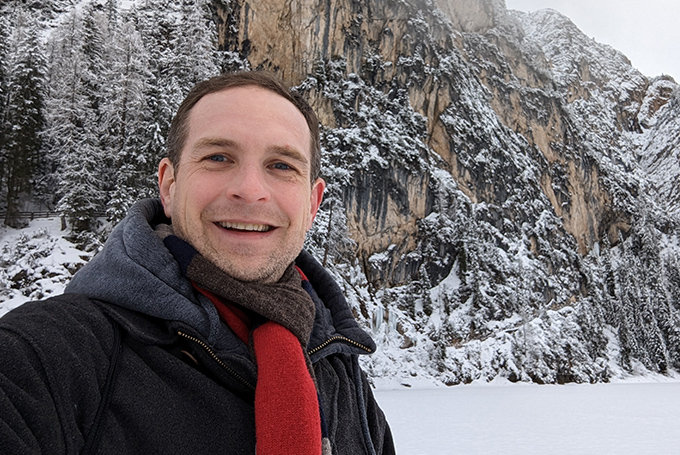by Stephanie Schorow
R. Chadwick Holmes, SDM ’20, parlayed a youthful fascination with rocks, minerals and fossils into an abiding curiosity about what lies deep under the earth’s surface and how technology can help determine the resources miles below our feet.
A Digital Solutions Earth Scientist at Chevron in Houston, Holmes – who goes by Chad –creates tools and analyzes data that can lead to more effective characterization of the earth, impacting exploration for energy sources like oil, natural gas, and geothermal. He has worked in different capacities for Chevron for the past 13 plus years, but he has always had what he calls “a whole system mindset.”
That led him in 2020 to seek a master’s degree in engineering and management with MIT System Design and Management, which teaches its fellows to use systems thinking to understand the technical, managerial, and societal components of large-scale, complex challenges. His experience at SDM proved to be “a game changer for my work.”
“It gave me a language to speak about earth science and business challenges as an entire system,” he says. “Everything that’s involved, all the inputs, the outputs, the boundaries. It showed me how I can frame a complex problem so that it’s not overwhelming and how I can decompose it into the pieces that are going to allow us to solve that problem.”
Holmes grew up outside Philadelphia with a huge interest in science. In high school, he participated in a Science Olympiad competition program, which included a memorable section on identifying minerals and fossils. (He always liked to collect rocks). That led him to obtain a B.S. in Geology and Computer Science from Duke University, a master’s in Earth and Environmental Science at Columbia, and a Ph.D. from Columbia in Marine Geophysics.
After a brief stint pursuing software development, he went to work at Chevron, still intrigued by large-scale system solutions. So he applied and was accepted into a company-sponsored one-year master’s degree program with SDM. Moving to Cambridge in August 2020 during the COVID-19 pandemic was challenging, but Holmes was soon absorbed by what he could learn at MIT. He was particularly influenced by the potential connections among the labs. “There are great synergies all throughout MIT,” he says.
Classes and professors at SDM showed him how to approach problems from multiple perspectives – to account for the viewpoints of all stakeholders and what they really wanted when developing technical solutions. After returning to Chevron to work in a newly formed digital innovation lab, he applied his skills from SDM in defining novel portfolio management methods for the prototype stage of product development.
It’s a way of breaking down siloed perspectives in big companies like Chevron, he explains. Complex problems like exploring the solid earth or determining which innovation ideas should be elevated when resources are limited require insights from many disciplines, each with its own view on how things should be done. “You want to account for feedback from leadership, but also from top subject matter experts, those paying for specific project work, and individual contributors on the projects directly impacted by prioritization decisions,” he says.
Applying the mindset and methods gained at SDM, Holmes and his colleagues were able to distill key metrics reflecting their lab’s portfolio. A digital tool with drop-down menus was created to streamline the valuation of diverse innovation ideas based on input from all stakeholders; data could then be used to create visualizations, set priorities and evaluate trade-offs. “We really were so excited by the outcome and how the method was changing the way people were thinking about managing portfolios, especially in the innovation space,” he says.
Inspired by this work, Holmes co-wrote a paper for Product Management and Development which examined the prioritization and selection approach his team developed. The paper outlined how the proposed workflow supports portfolio shaping and work prioritization across different business segments while facilitating stakeholder alignment and prototype visibility necessary to drive product commercialization.
That paper was awarded “Best Industry Paper” when it was first presented at the annual conference of the International Society of Transdisciplinary Engineering (ISTE). Holmes has co-authored two additional papers on related topics, which will be presented at the upcoming ISTE conference in July.
Now he would like to scale this approach to other digital product development groups. “That’s going to require talking to a lot of people, including a lot of decision makers who could easily say, no, not for us,” he says. “But now I have the ability to show in logical, rational ways that this is a process with a lot of potential. This is a methodology that everyone could adopt. And it could create substantial efficiencies for anyone trying to focus on doing the right work at the right time.”
And yes, Holmes still likes collecting rocks.

